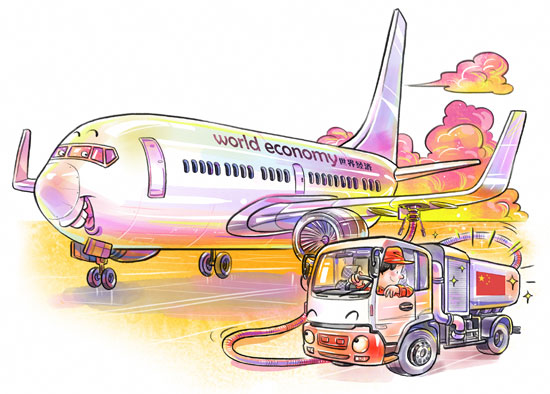A decade of sweeping economic changes
By Zhang Jun | China Daily | Updated: 2019-04-10 07:38

For the West, the year 2008 marked the beginning of a period of crisis, recession and uneven recovery. The year was an important turning point for China, too, but one that was followed by a decade of rapid progress that few could have foreseen.
Of course, when US investment bank Lehman Brothers collapsed, triggering a global financial crisis, China's leaders were deeply worried. Their concerns were compounded by natural disasters-including severe sleet rain and snow storms in South China in January 2008 and the devastating Wenchuan earthquake four months later, which killed 70,000 people-as well as unrest in Tibet.
At first, China's fears seemed to be coming true. Despite hosting an impressive Olympic Games in Beijing that August, its stock market plunged from its 2007 high of 6,124 to 1,664 points in October 2008, in what amounted to a record-breaking crash.
A development model based on consumption
But the Chinese authorities remained dedicated to their long-term plan to revise the country's growth model, by shifting away from exports and toward domestic consumption. In fact, the global economic crisis served to strengthen that commitment, as it underscored the risks of China's dependence on foreign demand.
This commitment has paid off. Over the last decade, many millions of Chinese have joined the middle class, which is now 200-300 million strong. With an average net worth of $139,000 per person, this group's total spending power could amount to more than $28 trillion, compared with $16.8 trillion in the United States and $9.7 trillion in Japan.
China's middle class is already wielding that power. It has accounted for 70 percent of global luxury purchases annually over the past decade. Although per capita car ownership is only about half the global average, since 2008, the Chinese have consistently been the world's leading auto purchasers, surpassing Americans. And in 2018, more than 150 million Chinese traveled abroad.
A shift in Beijing's strategic imperatives
For China's authorities, fostering the emergence of such a formidable middle class was a crucial strategic opportunity. As Vice-Premier Liu He wrote in 2013, the goal for China, prior to the crisis, lay in becoming a global production center, and to succeed in attracting international capital and knowledge. After 2008, China's strategic imperatives shifted to reducing debt risk and boosting aggregate demand, while deploying massive economic stimulus to encourage domestic consumption and investment, thereby decreasing China's vulnerability to external shocks.
As part of this initiative, China pursued large-scale infrastructure investments, such as building nearly 30,000 kilometers of high-speed railways. Increased connectivity-last year alone, that railway network carried nearly 2 billion passengers-facilitated much closer regional economic ties, propelled urbanization, and enhanced consumption substantially.
Thanks to such efforts-together with mergers and acquisitions to acquire key technologies and lucrative infrastructure investments in developed economies-China's economy almost tripled in size from 2008 to 2018, with GDP reaching 90 trillion yuan ($13.6 trillion). While China's GDP was 50 percent lower than Japan's in 2008, by 2016 it had become 2.3 times larger.
Rise of innovative sectors focused on consumption
To be sure, difficult challenges emerged. Land and housing values soared, with real-estate prices in urban areas rising so fast that many feared a bubble. Credit growth raised further risks. Overall, however, expansionary policies supported China's rapid emergence as a global economic power. And the consumption-focused innovative industries, which barely existed in 2008, are increasingly propelling the Chinese economy today.
China is now the global leader in e-commerce and mobile payments. In 2018, mobile payments in China amounted to $24 trillion-160 times the US' figure. State-owned banks and petrochemical companies that were China's top-ranking enterprises in 2008 have been surpassed by e-commerce and internet giants Alibaba and Tencent. Internet and technology companies are now creating tens of millions of jobs per year.
Meanwhile, the performance of the manufacturing sector-long the main engine of China's development and still the country's largest employer-has weakened, undermined in part by rapid wage growth. The result has been a fundamental change in the structural composition of China's economy.
Experts barking up the wrong tree
Yet rather than exploring this shift-which is not captured in traditional measures of GDP-many economists have focused on trying to poke holes in China's growth narrative. A recent Brookings Institution study, for example, estimates that China's economy is about 12 percent smaller than official figures indicate.
This does little good. The changes China's economy has undergone over the last decade are sweeping, unprecedented and essential. The world would be far better served by an effort to understand them than by attempting to prove that the country's achievements are less impressive than they are.
The author is dean of the School of Economics at Fudan University and director of the China Center for Economic Studies, a Shanghai-based think tank. Project Syndicate The views don't necessarily represent those of China Daily.
























